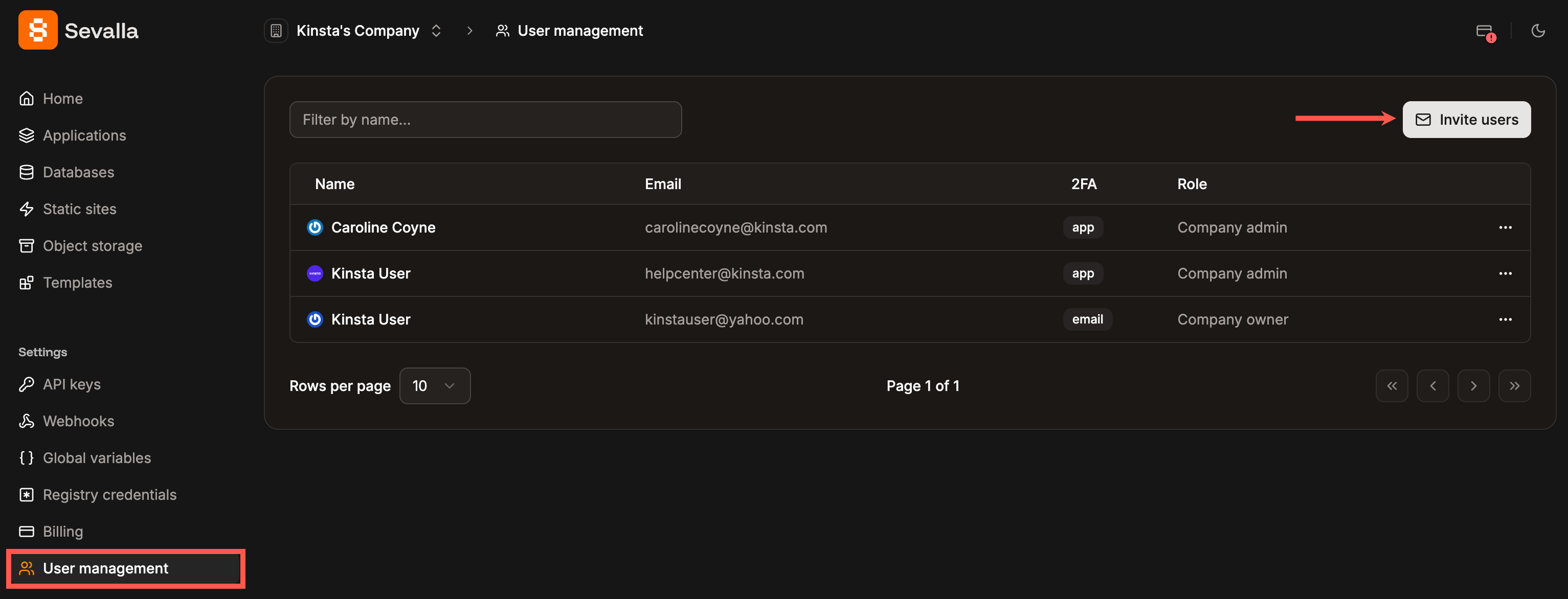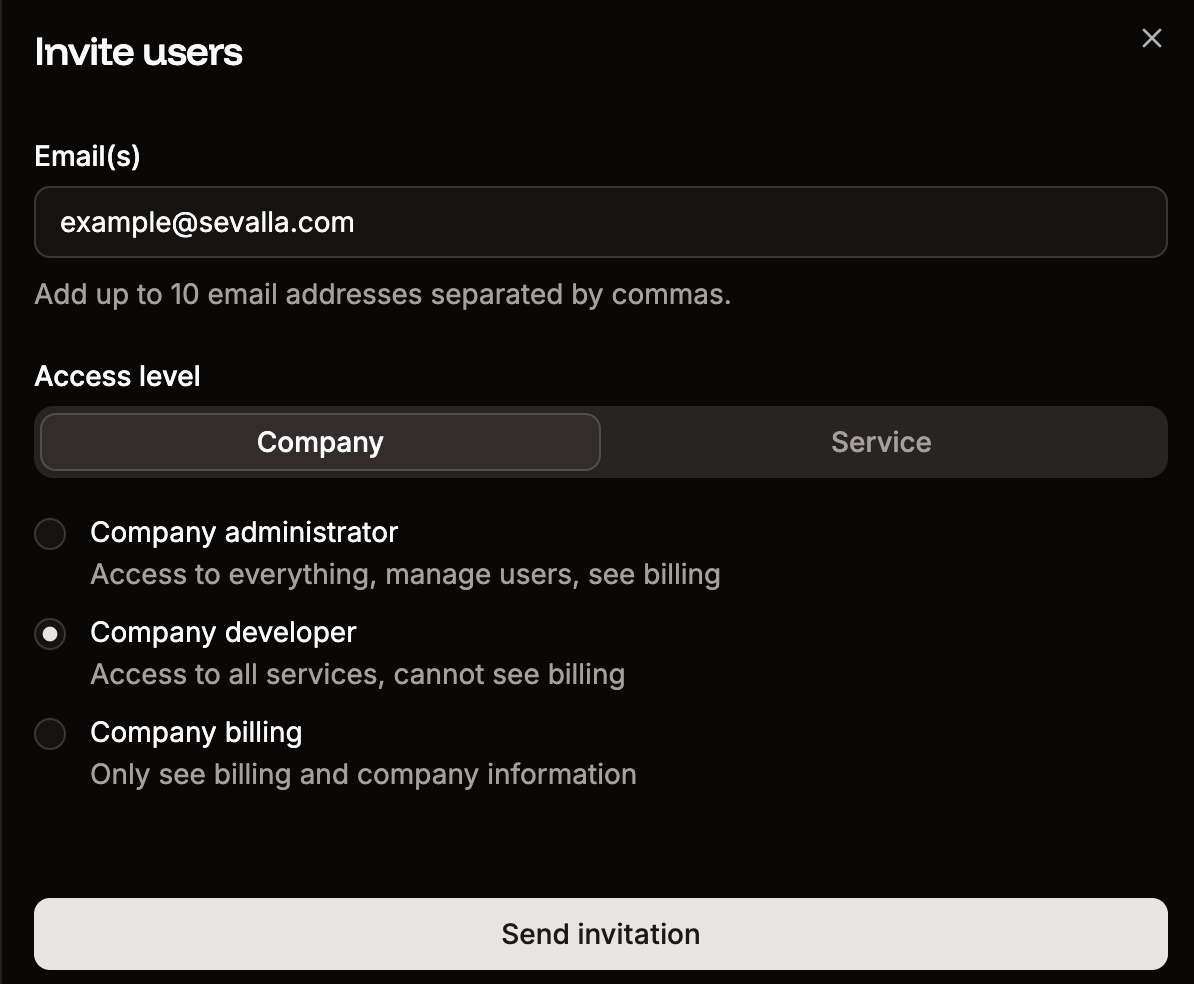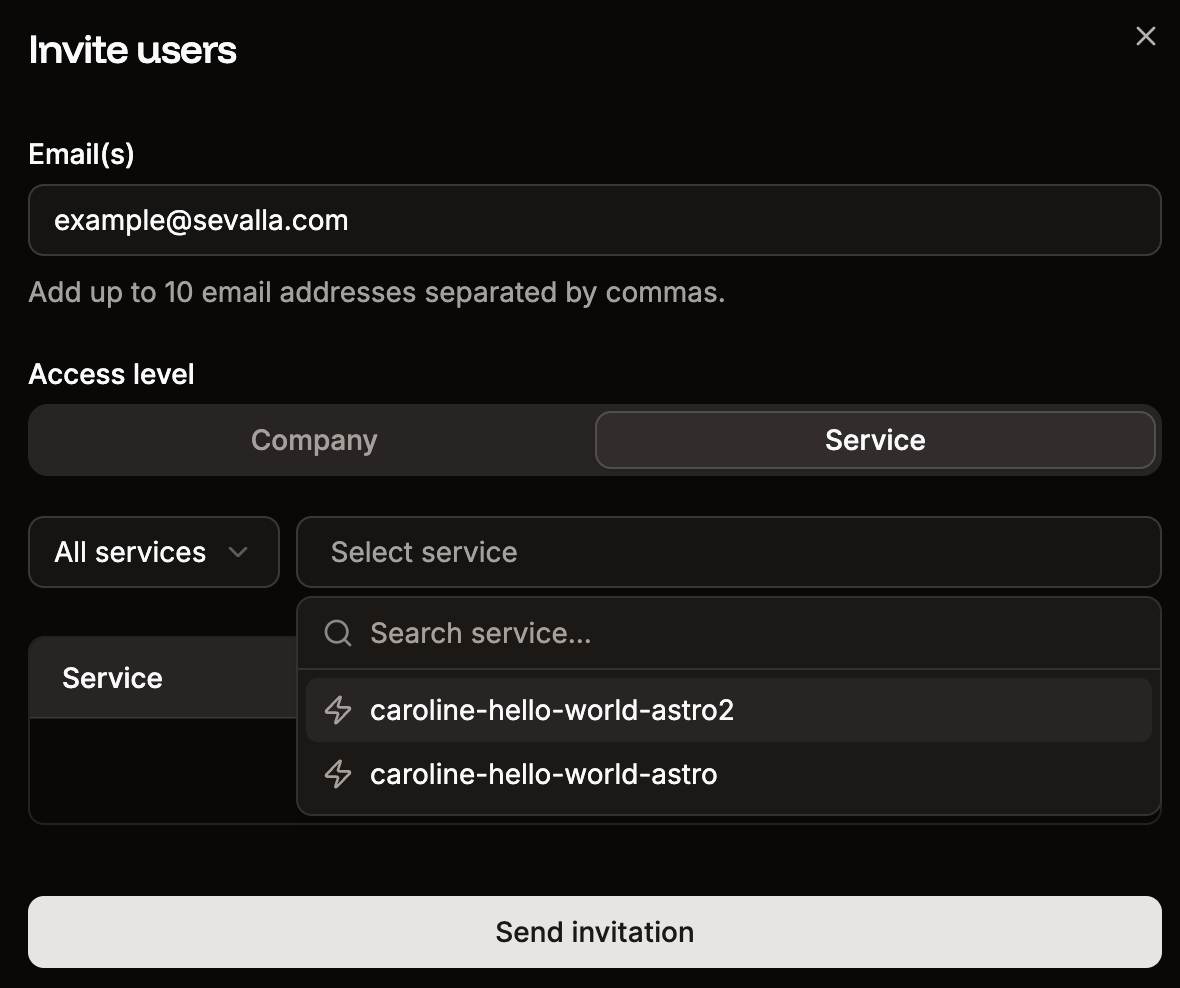User roles
Company Owner role
There is a special role called the Company Owner. A Company Owner is always also a Company Administrator. There can only be one Company Owner per company. A Company Owner is the only user in a company who can request an account closure or transfer company ownership (to a Company Administrator in the same account). Apart from that, they are exactly like Company Administrators in day-to-day use.Company roles
When inviting or modifying a user, the first choice is to give the user Company access or Service access. Service-level users only have access to specific applications, databases, static sites, or object storage containers you assign to them, while company users see company-level details. There are three company-level user roles to choose from, with various levels of access based on their role. All user roles have access to Sevalla’s Support team, but we can only assist with sites your user role can access. If you only have Static Site Hosting with Sevalla, this is a free service, and therefore chat support is not available. We do have detailed Static Site Hosting documentation, and you can also connect with developers and knowledgeable community members in the Sevalla Community forum. This forum is where you can ask questions and discuss all things static site hosting, including website deployment, static site generators, and more. Whether you’re curious about choosing the right style of a static site, troubleshooting issues, or optimizing performance, our community is here to assist you.Company Administrator
Company Administrators have the highest level of access. They have complete control of all company data and full access to all services, including DNS in Sevalla and migration requests. Only give Company Administrator access to users whom you trust.Company Developer
A Company Developer has access to manage all services and DNS in Sevalla and can manage service-level users. While a Company Developer can view the list of company users (including email addresses and roles), they cannot make any changes to company-level users. Company Developers do not see billing details or company settings. The following actions are billing events that a company developer does not have access to:- Add, suspend, or remove applications, databases, static sites, or object storage containers.
- Change the build resources for an application.
- Change the pod size or the number of instances for an application process.
- Change the database size.
- Add or remove an add-on.
Company Billing
A Company Billing user only sees billing details and company settings. They can see invoices, enable automatic invoice emails, and modify company details like name and address. They do not have access to any sites, applications, databases, or object storage containers in any way.Service roles
Service-level users can access a specific site, application, database, or object storage container. They may have access to more than one service, such as an application or two applications and a database.Static Site Administrator
Static Site Administrators have complete access to the site they are given access to, with the exception of removing the static site. A single user can be a Static Site Administrator for multiple sites.Application Administrator
Application Administrators have complete access to the application to which they are given access, with the exception of removing the application. A single user can be an Application Administrator for multiple applications.Database Administrator
Database Administrators have complete access to the database to which they are given access, with the exception of removing the database. A single user can be a Database Administrator for multiple databases.Object Storage Administrator
Object Storage Administrators have complete access to the object storage container to which they are given access, with the exception of removing the container. A single user can be an Object Storage Administrator for multiple containers.Sevalla user roles and permissions chart
The following chart provides more specific details about the capabilities each user role has.| Capability | Company Owner | Company Administrator | Company Developer | Company Billing | Service-level Administrator |
|---|---|---|---|---|---|
| Access billing details or change plan | Yes | Yes | No | Yes | No |
| Manage all sites, applications, databases, or object storage containers | Yes | Yes | Yes | No | No |
| Manage one site, application, database, or object storage container | Yes | Yes | Yes | No | Yes |
| Install or remove a paid add-on | Yes | Yes | No | Yes | No |
| Request 2FA be disabled for other users in a company* | Yes | No | No | No | No |
| Add, suspend, or delete a site, application, database, or object storage container | Yes | Yes | No | No | No |
| Access site, application, or database analytics | Yes | Yes | Yes | No | Yes |
| Request persistent storage backup restoration | Yes | Yes | No | No | No |
Invite a user
With our multi-user feature, you can create and manage a team and give them access to various aspects of your sites, applications, databases, or object storage. On the Company Users page, you can invite users to your company or services. Note: You can also invite a user to a service (but not your company) on the service-level Access management page.After you invite a user, they will receive a notification email inviting them to your company. If they do not have a Sevalla account, they’ll need to sign up for one or use Single Sign-On (SSO) to log in and access the company they’ve been invited to.
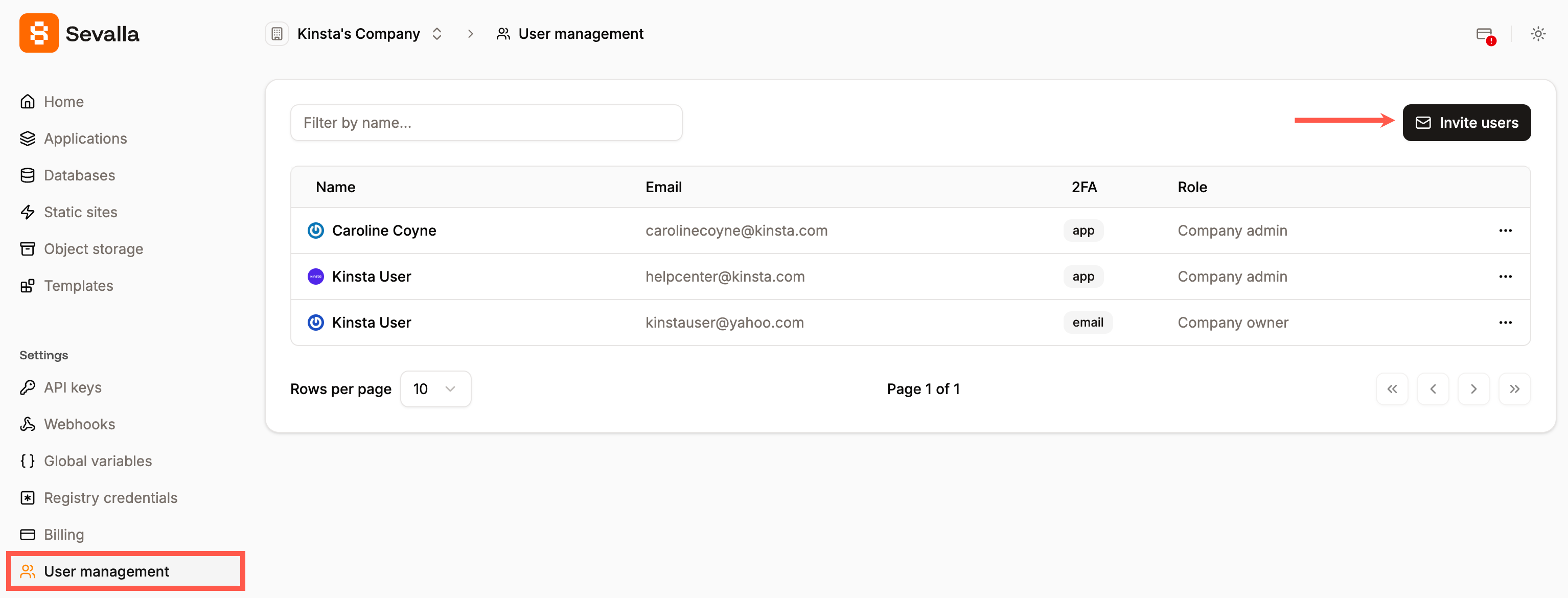
Invite users to your company in Sevalla.

User invite details with company access.
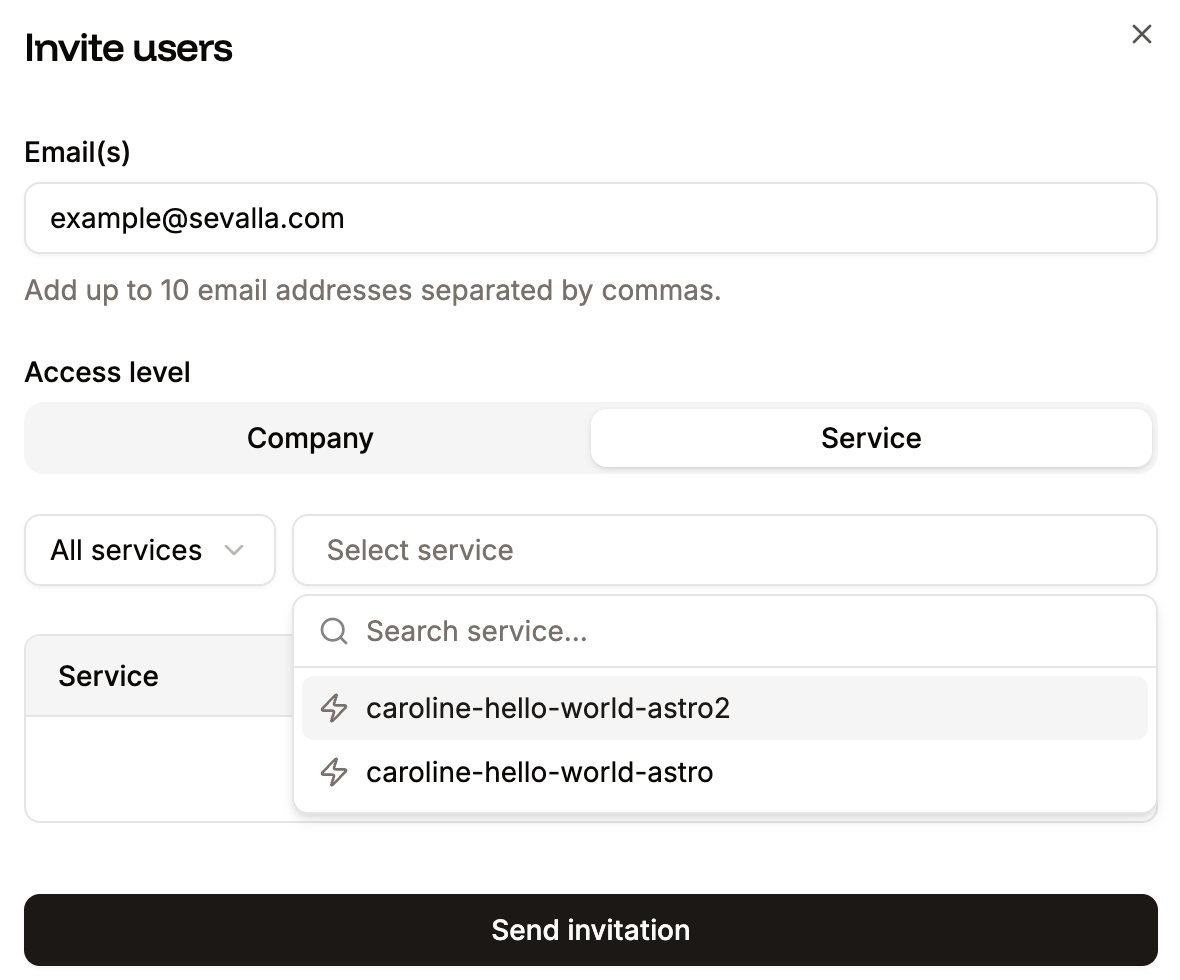
Choose the service you want to grant the user access to.
Add users within a service
You can add users within an individual application, database, static site, or object storage container within Access management > Invite users.
Invite users to a service in Sevalla.
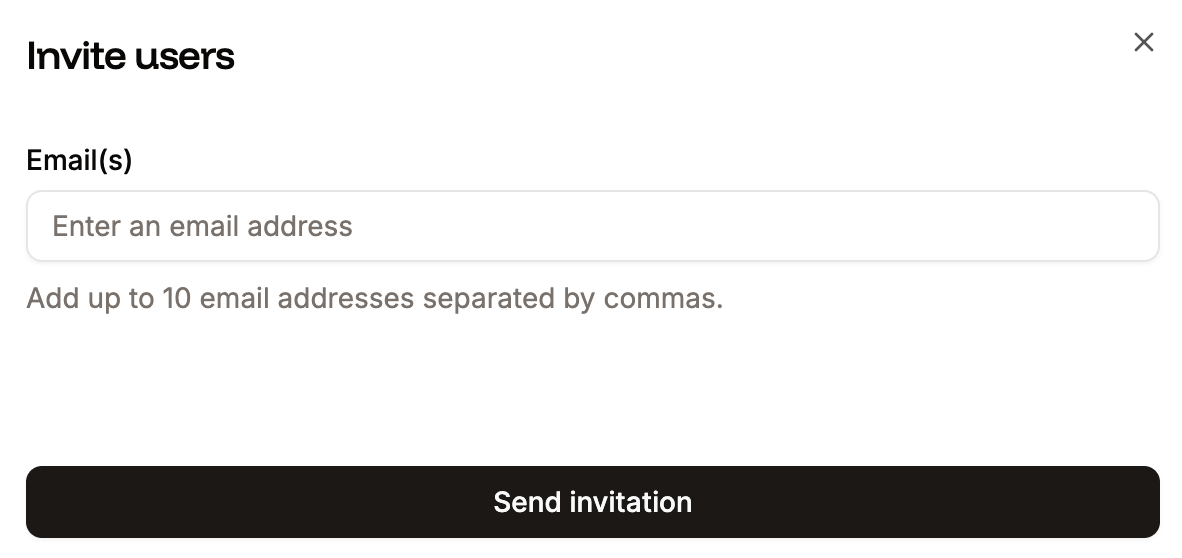
User invite email address.
After you invite a user, they will receive a notification email inviting them to the applicable service(s). If they do not have a Sevalla account, they’ll need to sign up for one or use Single Sign-On (SSO) to log in and access the service they’ve been invited to.
Resend or cancel a user invitation
If you need to send the invitation to a user again, click the ellipsis (three dots) on the user, click Copy invitation link, and send it to them. If you need to cancel the pending invitation, click Cancel invitation.
Resend pending company user invitation in Sevalla.
Update a user’s access level
If you want to change a user’s access level, click Settings > User management, click the ellipsis (three dots) on the user, and click Update.
Update a user in Sevalla.
Remove a user
Removing a user from a company will also remove that user from all sites, applications, or databases associated with the company. The user does not receive any notification when they are removed. If you want the user to have access to one or more services but not company access, you can invite them and only give them access to the required services.Removing a user does not automatically revoke access to any API keys they may have had. You should review your API keys and revoke access to any that the user may have had access to within Company settings > API keys > Revoke.

Remove a user from a company in Sevalla.
